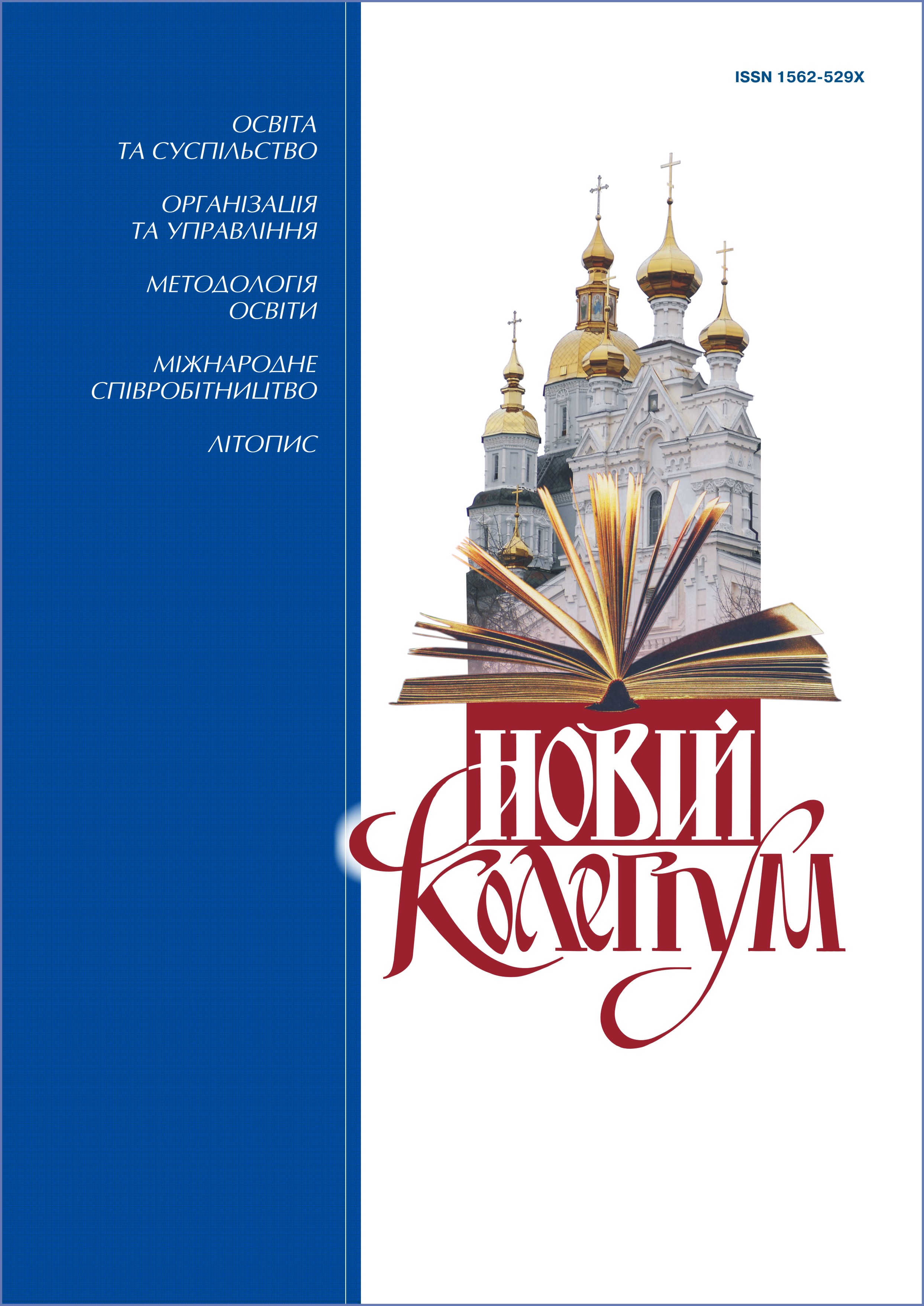TECHNIGUES USED FOR THE ACTIVATION OF COGNITIVE ACTIVITIES IN SENIOR PUPILS INVOLVED IN THE TEAM WORKING
DOI:
https://doi.org/10.30837/nc.2020.1.60Keywords:
cognitive activity, team working, team working techniques, senior pupils, and “passing through the labyrinth”.Abstract
The team form of learning activities appeared as an alternative to the available traditional forms of teaching. Psychological and pedagogical research data show that team learning activities contribute to the activation and effectiveness of the teaching of schoolchildren, rearing humane interrelations between them, self-reliance, ability of pitching and espousing the standpoint of their own and also listening to the opinion of their comrades, rearing the dialoging culture, responsibility for the results of their work. Therefore, team learning activities is the form of learning organization for the small teams of students that are united by the common learning goal with the intermediate management of the teacher cooperating with them.
Analyzing the available forms and methods of work used by the teachers in their activities we drew a conclusion on the insufficient amount of techniques that contribute to the activation of mental activities in pupils. For this purpose we developed “the labyrinth” that allows the team of students to pass through it. The “labyrinth” permits the solution of a number of problems with intricate moves and the students are supposed to manage the situation. “The labyrinth” developed by us consists of many problems that include in their turn the microproblems.
The obtained results allowed us to define the following peculiarities of use of the “labyrinth” as a team working technique:
Aspiration for the information exchange;
Positive emotionality during the fulfillment of all the tasks;
Mutual assistance during the discussion; Cooperation;
some students felt the need for the explanation of the problem solution procedure to other students;
Aspiration for the self-assertion.
References
Вікова і педагогічна психологія : навч. посіб. / т.В. дуткевич, В.а. Яцюк ; кам’янець-Поділ. держ. ун-т, Ін-т соц. реабілітації і розв. дитини, каф. психології освіти і упр. кам’янець-Подільський, 2007. 207 с.
Вікова та педагогічна психологія : навч. посібник / о.В. скрипченко, Л.В. Волинська, 3.В. огороднійчук та ін. київ : Просвіта. 2001. 416с.
Тихенко Л.В., Сидоренко Н.Ю. Вплив пошуково-дослідницької діяльності старшокласників на розвиток їхніх творчих здібностей / Л.В. тихенко, н. Ю. сидоренко // Позашк. освіта та виховання. 2008. № 1. с. 30–35.
Корсун І.В. Роль методів та організаційних форм навчання в активіза- ції навчально-пізнавальної діяльності старшокласників / І.В. корсун, В.д. сиротюк // Збірник наук. праць кам’янець- Подільського державного університету. серія педагогічна. кам’янець-Подільський : к-ПдУ, 2006. Вип. 12. с. 283–285.
Лісіна Л.О. теоретичні основи розвитку пізнавальної активності школярів у процесі навчання основам наук // Професійне становлення педагогічних працівників : Збірник наук. праць. Запоріжжя: Запоріж. обл. ін-т удосконалення вчителів, 1997. Вип. 5. с. 187–196.
Освітні технології : наук.-метод. посібник / о. Пєхота, а. кіктенко, о. Любарська ; за заг. ред. о. Пєхоти. київ : а. с. к., 2001. 489 с.
Пометун О.І. сучасний урок: Інтерактивні технології навчання / о. І. Пометун, Л.В. Пироженко. київ : а.с.к., 2004. с. 50–96.
Роменець В.А. Психологія творчості : навч. посібник. 3-тє вид. київ : Либідь, 2004. 288 с.
Чувасова Н. О. дидактичні умови підвищення ефективності діалогічного навчання у формуванні пізнавальної активності старшокласників // Педагогіка вищої та середньої школи : Збірник наук. праць. кривий Ріг : кдПУ, 2005. Вип. 12. с. 198–207.
Ярошенко О. Г. Групова навчальна діяльність школярів: теорія і методика. київ : Партнер, 1997. с. 46–74.

